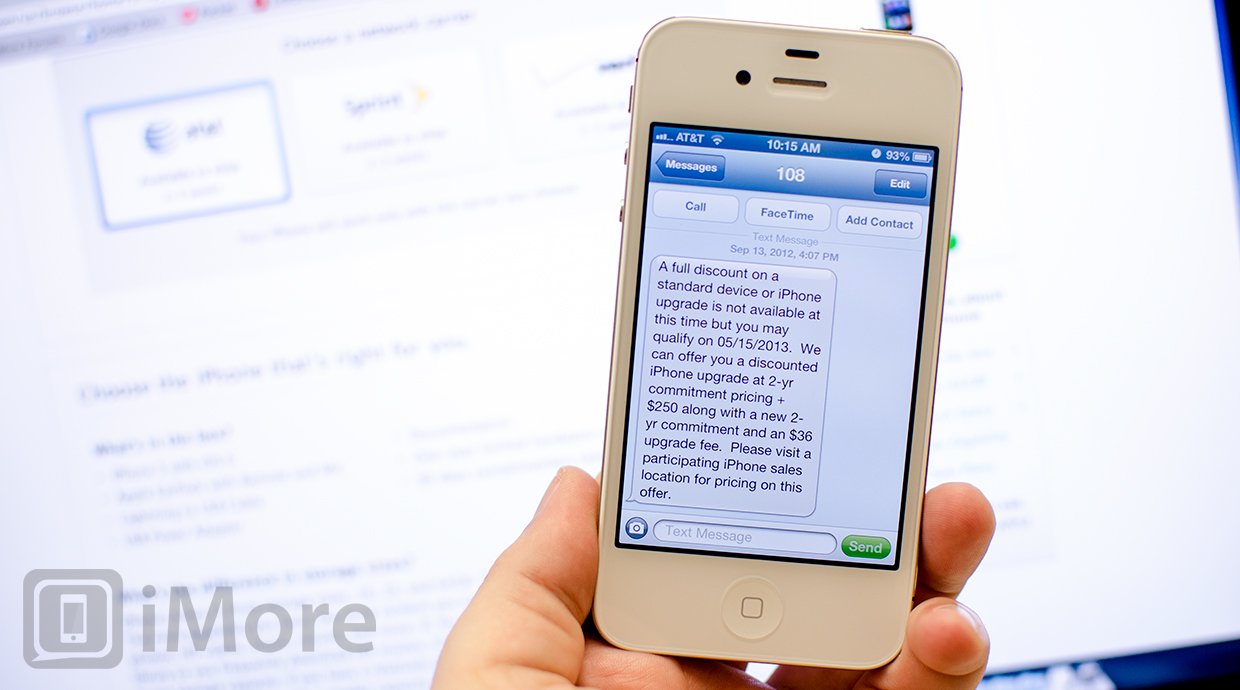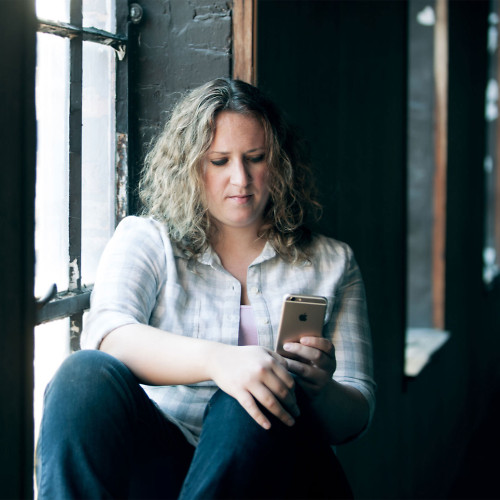Why you shouldn't expect early upgrade eligibility for the iPhone 5

If you're itching to grab the the iPhone 5 on release day, probably the first thing you checked was your upgrade eligibility. Odds are, if you purchased the iPhone 4S last year, you aren't eligible this to upgrade yet this year, and so you'll have to pay a higher price to snag the latest and greatest from Apple.
In the past, AT&T and many other U.S. carriers have made exceptions when it came to upgrades for iPhone, but they're not anymore. And despite our expectations, they're not obligated to.
Last week one of our editors, Leanna, wrote about her current situation and why she'd be switching to Verizon from AT&T. While her specific situation was different than many, she probably isn't the only one that hasn't had any luck getting their carrier to change upgrade eligibility.
Here's the reason -- they basically lent you money in the form of a subsidy so that you could pay less for your iPhone when you bought it, with the understanding you'd pay that money back over the course of your 2 year contract. Since your 2 year contract isn't up yet, you haven't finished paying that loan back yet. So your carrier would lose that money by letting you upgrade early while also fronting you more money to subsidize your next phone.
Now carriers make so much money that no one's shedding any tears over the difference, but they're for-profit companies with shareholders, and they pay a pretty penny to Apple for the iPhone -- over $400, which is higher than other phones -- and they want to make as much money as they can out of it.
It wasn't always that way, of course. When the first generation iPhone came out, there was no contract pricing available. The phone was fully unsubsidized and if you wanted it, you paid full retail for it. That meant that when the iPhone 3G came out the following year, many people still had an upgrade available (as long as they didn't use it on any other phone after purchasing the original iPhone). This led a lot of people to believe that AT&T was doing them a favor when in all actuality, they weren't.
For years after, people caused a scene over not being able to upgrade every single year when a new iPhone came out. AT&T even made exceptions and moved upgrade eligibility windows, sometimes by months, to accomodate customers that weren't yet eligible. In hindsight, that probably wasn't a smart move on their part and led many customers to feel entitled to an iPhone upgrade every single year.
Master your iPhone in minutes
iMore offers spot-on advice and guidance from our team of experts, with decades of Apple device experience to lean on. Learn more with iMore!
Within the last year, many U.S. carriers have changed their upgrade policies and their ETF structure to better handle the amount of customers using smartphones in general and the iPhone in particular. The iPhone is also now available on every major U.S. carrier except for T-Mobile and the options customers have to choose from are better than ever.
AT&T also changed the way their upgrades are calculated. Until this year, if you had around $80 in charges on your primary line and paid your bill on time every month, your primary line was probably upgrade eligible every 12 months or so. Now with the iPhone 5, many customers are seeing their upgrade window is 18-24 months instead. This isn't a brand new policy. After purchasing my iPhone 4 back in 2010, my upgrade eligibility immediately showed one calendar year later. After purchasing my iPhone 4S, my eligibility showed May of 2013.
In Leanna's case, her ETF was actually less than it would be to purchase the new iPhone and stay with AT&T. Since AT&T doesn't seem keen on moving eligibility for anyone, it's cheaper for her to make the jump to Verizon. Leanna's situation made it around $45 cheaper to switch to Verizon. This wouldn't be the same for everyone, however, since ETF is calculated as a fee that is decreased every month based on the kind of device you use. While users that purchased an iPhone on launch day or close to it may be in the same boat, users that didn't probably have far more left to pay. Also don't forget any additional lines you have that you'd have to pay an ETF for unless you're willing to pay two carrier bills. My guess is most customers want their wireless lines on the same carrier. Sometimes the system works to your advantage but in most cases, most users won't find it beneficial to cancel a contract not even half way through it. The house, as they say, always wins.
Keep in mind this isn't unique to the iPhone. If you wanted to purchase any other phone, and you weren't eligible for upgrade pricing, you would have to pay full retail price for it. And you'll most likely see the same practice across all carriers, at least in the U.S. It also isn't unusual for carriers to lock down customer service's abilities to change upgrade dates and offer bill credits without approval when iPhones are announced and released. Even if they want to help you, they may very well not be able to.
For the general public, who don't care about upgrading every year, this isn't even an issue. It's something that mostly affects gadget geeks like us.
What it comes down to is the carrier's bottom line. Smartphones are eating more data than ever, especially the iPhone. Apple demands a high price from carriers in order to carry the iPhone as well. The hike in ETF's and the change in eligibility helps carriers support the bandwidth and pay the premiums. Long gone are the days of carriers bending the rules and treating iPhone users differently than everyone else. If anything, they'd probably rather we all bought Android phones that cost them less to buy and let them monetize with pre-loaded apps and services.
So, if you intend to upgrade every year, plan on paying a premium for doing so. Previous years were exceptions, this is normal.
iMore senior editor from 2011 to 2015.

